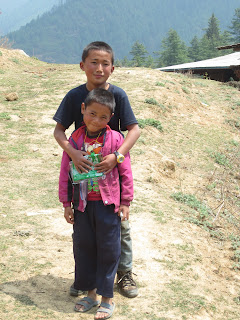The history of indigenous medicine in Bhutan is inseparable from the nations spiritual heritage, and the traditional approach to healthcare is deeply and intrinsically linked to Buddhist cosmology. TSo-ba Rig-pa ("science of healing") has it's roots in Tibet where a medical system took shape in the 8th century influenced by the arrival of the Buddha's teachings. According to Buddhist tradition, upon attaining enlightenment the Buddha also implicitly realized and mastered the art of healing; the insight he gained into the nature of suffering and illness, and liberation from it, form the foundation of the Buddhist approach to healthcare. According to Dr. Tandi Dorji in the book The Medical History of Bhutan: "The core Buddhist teachings form the basis of Buddhist medical doctrines that influence traditional medical practice not only in Bhutan and Tibet, but throughout the region where Buddhism has a major influence." (It is no surprise then that Buddhist lamas have long been considered the countries primary practitioners of healing, and that monasteries have traditionally been repositories of medical knowledge.) In addition, other great systems of established medical thought inspired Tibetan and Bhutanese medicine in it's formative years; the Ayurvedic tradition of India provided much of the theoretical basis, and Chinese sources are said to have played an integral role as well.
Traditional approaches formed the foundation of localized healthcare within the country until the early 1950's with the establishment of a nationalized medical system, centered on the western allopathic model which had been steadily gaining popularity in Bhutan since it's arrival in the earlier part of the century. In 1967 the government acknowledged the scientific & cultural importance of traditional medicine within Bhutan and officially made it a part of the universally accessible national healthcare system, giving people the choice of both allopathic and traditional options. Talk about complementary healthcare!
On the morning that I visited the hospital (a day clinic really), I was impressed to find it filled with people of all ages patiently awaiting appointments. When it was finally my turn, I was admitted to see a doctor who proceeded to ask me a plethora of questions regarding my current symptoms as well as my health history. After checking my tongue and listening to my pulse for quite some time, I was then sent to the dispensary to receive the series of medicines I was advised to take for the next week.
As I walked home from this hospital I was reminded of a conversation which I had with a Bhutanese woman early on in my time here. She was explaining to me (in simple terms) the role that different Buddhas and Bodhisattvas play within the Bhutanese Buddhist universe, and how each is sought in prayer in different situations based on the specific attributes and energies which they embody. According to the The Medical History of Bhutan, "Medicine Buddha (Sangay Menlha) embodies healing and is worshipped to cure all ailments that affect mankind. He is recognized as the Buddha doctor, or Bodhisattva physician of vitality. He is an enlightened being who protects living beings from physical illness, mental illness, dangers and obstacles." It was explained to me by my Bhutanese friend the importance of saying a prayer to Sangay Menlha prior to taking medicines, as it is the Medicine Buddha which will bring relief from suffering, not the medications themselves...the pills and powders are merely a channel through which the Buddha works.
 |
| Sangay Menlha ~ Medicine Buddha |
I have been following this sage advice, keeping Sangay Menlha in mind as I partake of the healing medicines of Bhutan...sourced from her mountains and valleys, and swallowed down with her cool, soothing water. It has been nearly a week now and, whether it's the herbs or Medicine Buddha's intervention (or a combination of both), I am feeling much better...for this I am most grateful.

















































